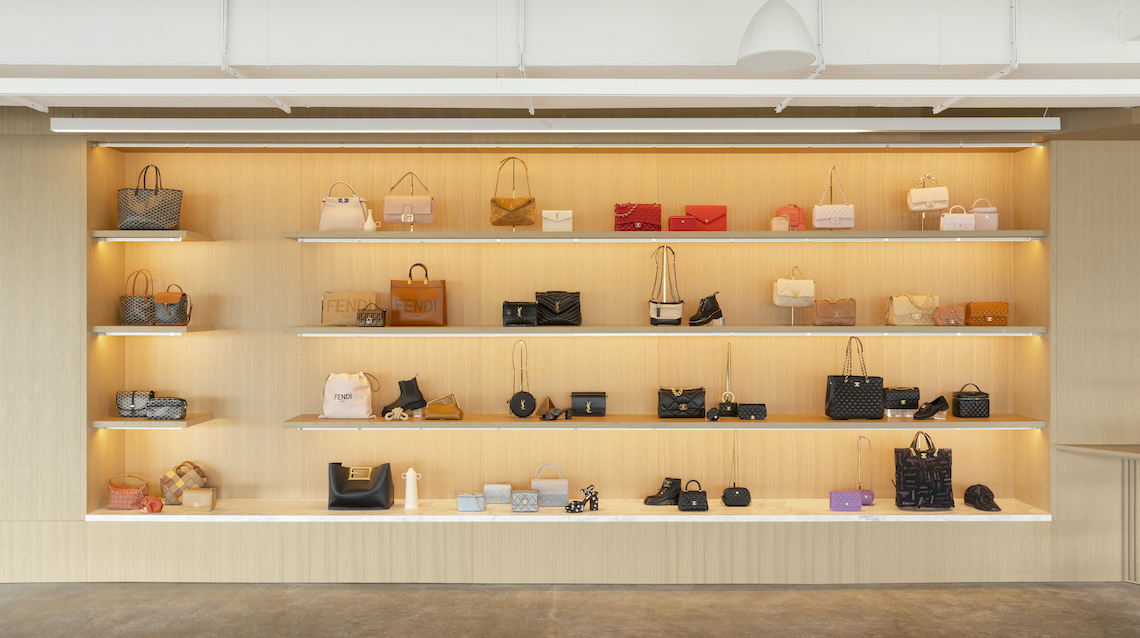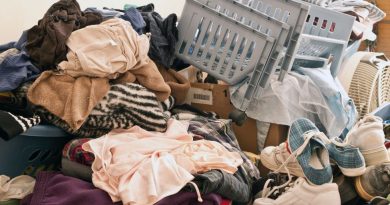Fashion Briefing: Inside the rapidly evolving world of resale authentication
This week, a deep dive into how resale platforms are expanding their authentication processes, for both brand and customer safety. Scroll down to use Glossy+ Comments, giving the Glossy+ community the opportunity to join discussions around industry topics.
As fashion resale has boomed, authentication has continued to play a big part in the value proposition of platforms like StockX, The RealReal, eBay and Fashionphile. This is particularly true in categories like watches, sneakers and handbags, where enthusiast customers can have an encyclopedic knowledge of product types and want to be absolutely certain the product they’re getting is what it says it is.
And as the resale category grows, those platforms are investing more than ever in their authentication, anti-counterfeiting and behind-the-scenes technology to bring in new customers, compete with other platforms and reassure brands that their image is safe.
StockX, for example, has opened three new authentication centers in the last 12 months. The Berlin center opened in August, followed by Tokyo in October and Mexico City in January. Altogether, the new centers represent 180,000 square feet of added authentication space.
Paul Foley, head of brand protection at StockX, said the investment is a necessity. Resale is growing to be a $350 billion global industry, with the U.S. alone set to account for $70 billion in resale sales. And the amount of product flowing through platforms like StockX is increasing all the time. StockX company authenticates more than a million products per month. Within the last year, the company rejected more than $120 million worth of goods that didn’t meet its authentication standards.
Not all are counterfeits. For example, authenticators also check the product’s condition and its size, to ensure sure it aligns with what the seller ordered. Fake product is the second most common reason StockX rejects something, making up around 20% of all rejections. Manufacturing defects are more common.
According to Foley, authentication is an important factor for every party involved in resale: The customers want to get the right product, the platforms don’t want to be accused of selling fakes and the brands want their image protected in the secondary market.
“Authentication is important because it’s pivotal that both brands and customers feel safe,” Foley said. “Ideally, brands and marketplaces like us need to work together. We both have a lot of intelligence about who the counterfeiters are. For us to jointly go after them, we need to cooperate. Many people shop the same brands both new and resale, so we share a customer. And we reach out to brands all the time to coordinate on brand protection and anti-counterfeiting.”
Foley said there are three main ways that counterfeits can end up on a resale platform: low-information customers selling something without knowing it’s fake, high-volume sellers being too limited on time to authenticate every item they sell and malicious actors knowingly selling counterfeit goods. Often, counterfeits come straight from the manufacturers who make the real goods, but they’re made from leftover materials and sold out the back door without the brand knowing. One designer, asking not to be named, told me their brand has people working undercover inside the factory to prevent that exact problem.
Another resale mainstay, eBay, has also been expanding its authentication efforts over the last year. In May, eBay added streetwear authentication for nine brands including Supreme and Off-White. It plans to add authentication for 21 more, including Adidas, Gucci and Jordan, later this year.
On the customer side, Foley said there are concerns beyond just getting a fake product. Counterfeiters obviously don’t have to adhere to any of the same ethical or regulatory standards as legitimate manufacturers, so it’s possible for a product to not only be inauthentic but also harmful. Last year, a study from the American Apparel & Footwear Association found that counterfeit fashion can contain harmful chemicals like arsenic due to using cheap, low-quality dyes that regular manufacturers don’t use.
But the authentication’s main draw is for the enthusiast customer. Sarah Davis, founder of the luxury resale platform Fashionphile, said this is what separates a luxury platform like hers from a more mass-oriented one like ThredUp.
“I’m a massive fan of ThredUp. I shop them all the time,” Davis said. “But if you find a Birkin bag on ThredUp, it’s probably just listed as ‘Pink Birkin’ or something. We can’t really get away with that for our customer. They really care about the specifics. It’s not just a pink Birkin, but it’s the Hermés Rose Tyrien Birkin. Our customer knows exactly what they want. They want lambskin, not goatskin. So we have to be hyper-detailed about [every detail].”
EBay has also felt the push for better authentication from the highest tier of enthusiasts who have a deep knowledge of the products they’re looking for.
“EBay has pieces from nearly every notable streetwear drop that’s ever happened, whether in 1993 or 2023,” said Garry Thaniel, global gm of sneakers and streetwear at eBay. “We’ve heard loud and clear from our enthusiast community that they want to be able to come to eBay to buy and sell apparel in the same seamless way they do for sneakers.”
The drive for more detailed information and authentication on each bag is driving Fashionphile to adopt new technology. Davis said the company has begun using a visual recognition tool to speed along the process of identifying bags alongside human authenticators. As an example, she said many bags often come in multiple sizes. Usually, different sizes of the same bag have minimal differences beyond the dimensions, so identifying the correct size can require, for example, manually counting the number of quilts on each surface of the bag or doing another menial task that’s easy to get wrong.
“A computer can do something like that in seconds,” Davis said.
She said Fashionphile has trained its visual recognition software on thousands of photos. And, she said, it’s relied more heavily on customer photos than its own in-house photography.
“Our photos all look the same — the same lighting, the strap placed in the same spot,” Davis said. “But people send us quick photos they took of the bag on their kitchen counter or something, and those are actually really helpful since we get all these different angles to work with.”
Foley said technological changes on the brand side are also aiding with authentication. Brands like Burberry and Bottega Veneta have added RFID tags and NFC chips within their products to help facilitate authentication.
“We see more brands moving to that type of technology, and it makes sense for us to leverage that when they do,” Foley said.
AI technology is also at the forefront of many resellers’ minds. EBay bought an AI-powered fraud detection company 3PM Shield in February and both Davis and Foley said they’re experimenting with AI, as well.
“But human authenticators will always be involved,” Foley said.
Inside our coverage
Glossy’s Top Marketers of 2023
Luxury Briefing: With new waitlist, Louis Vuitton is making it harder to buy a Neverfull tote





